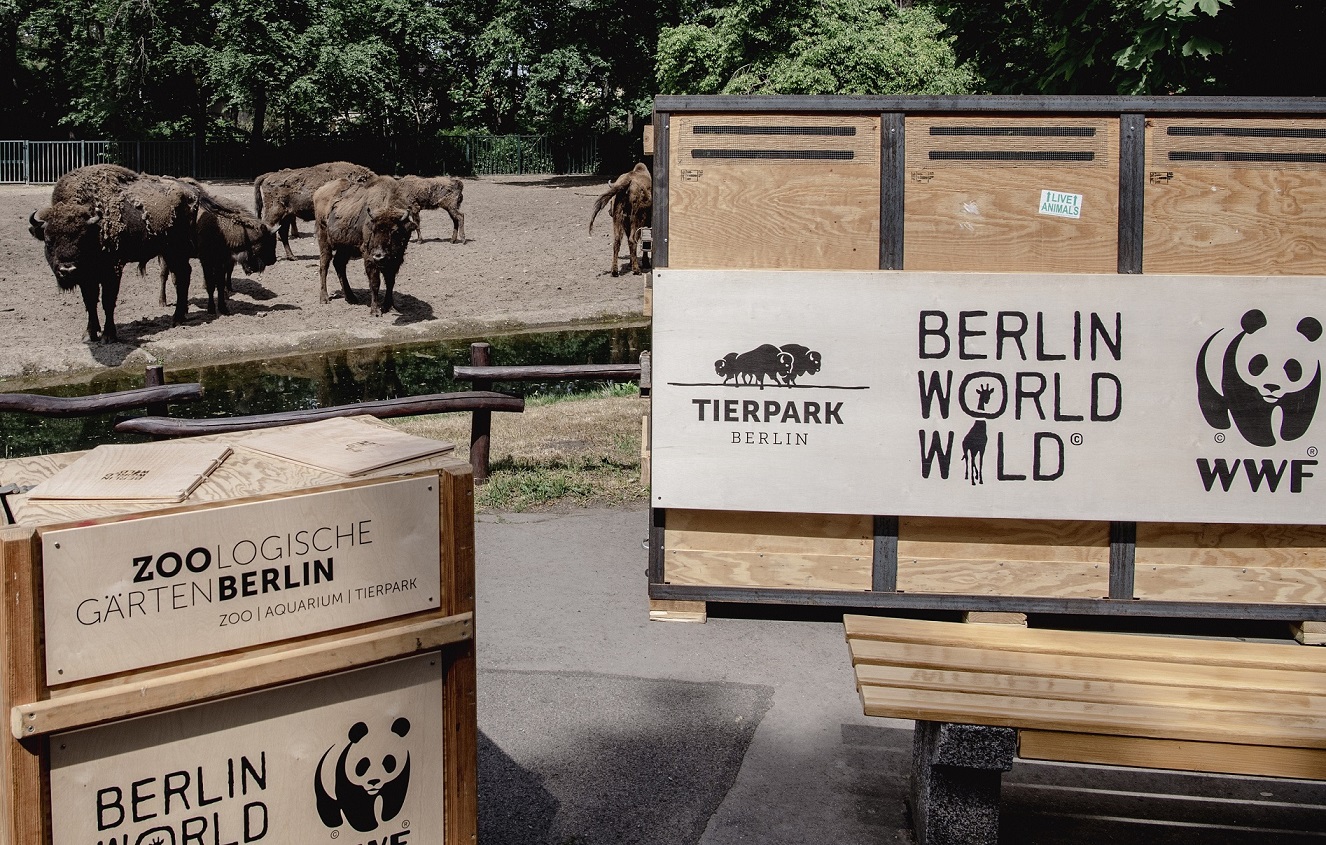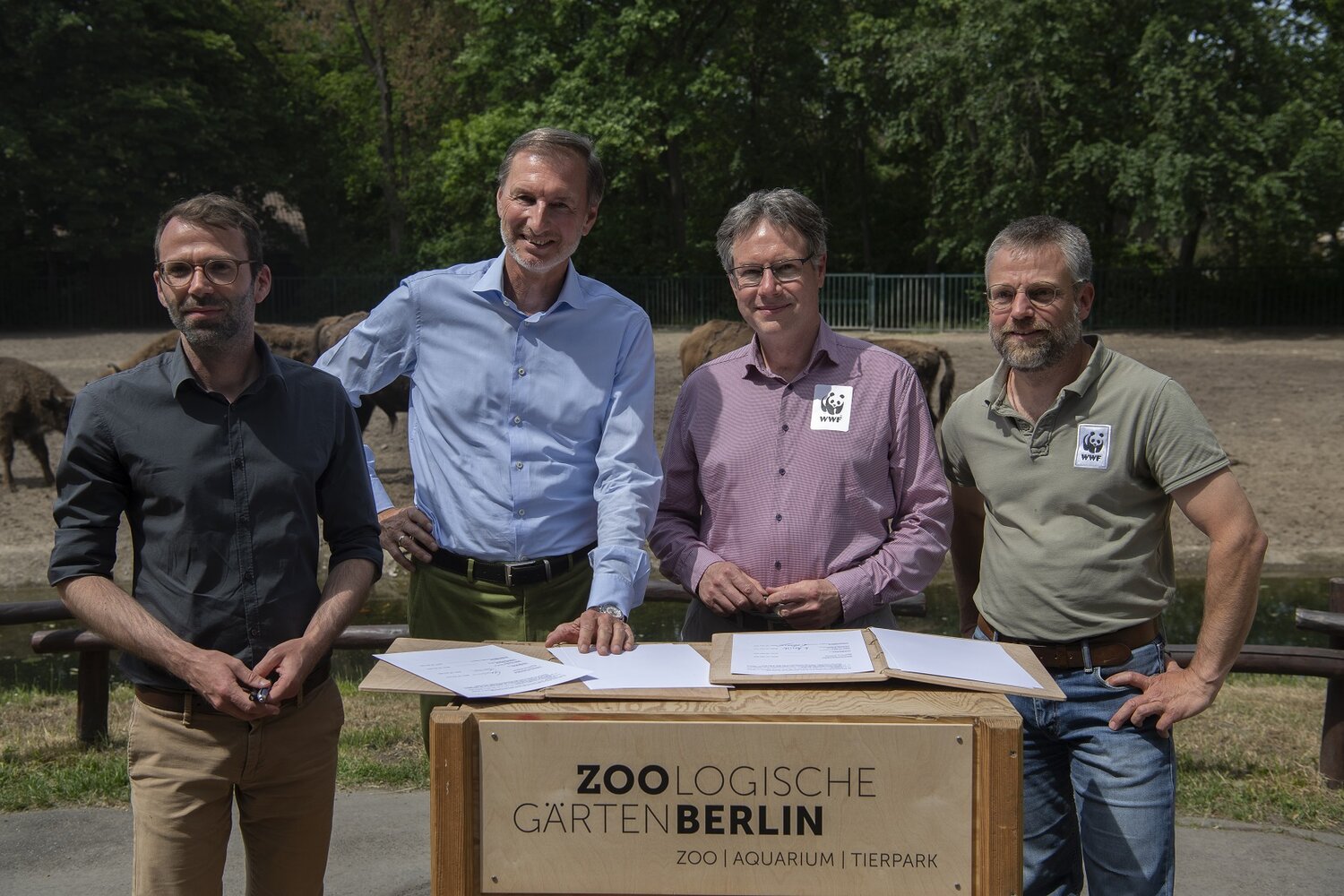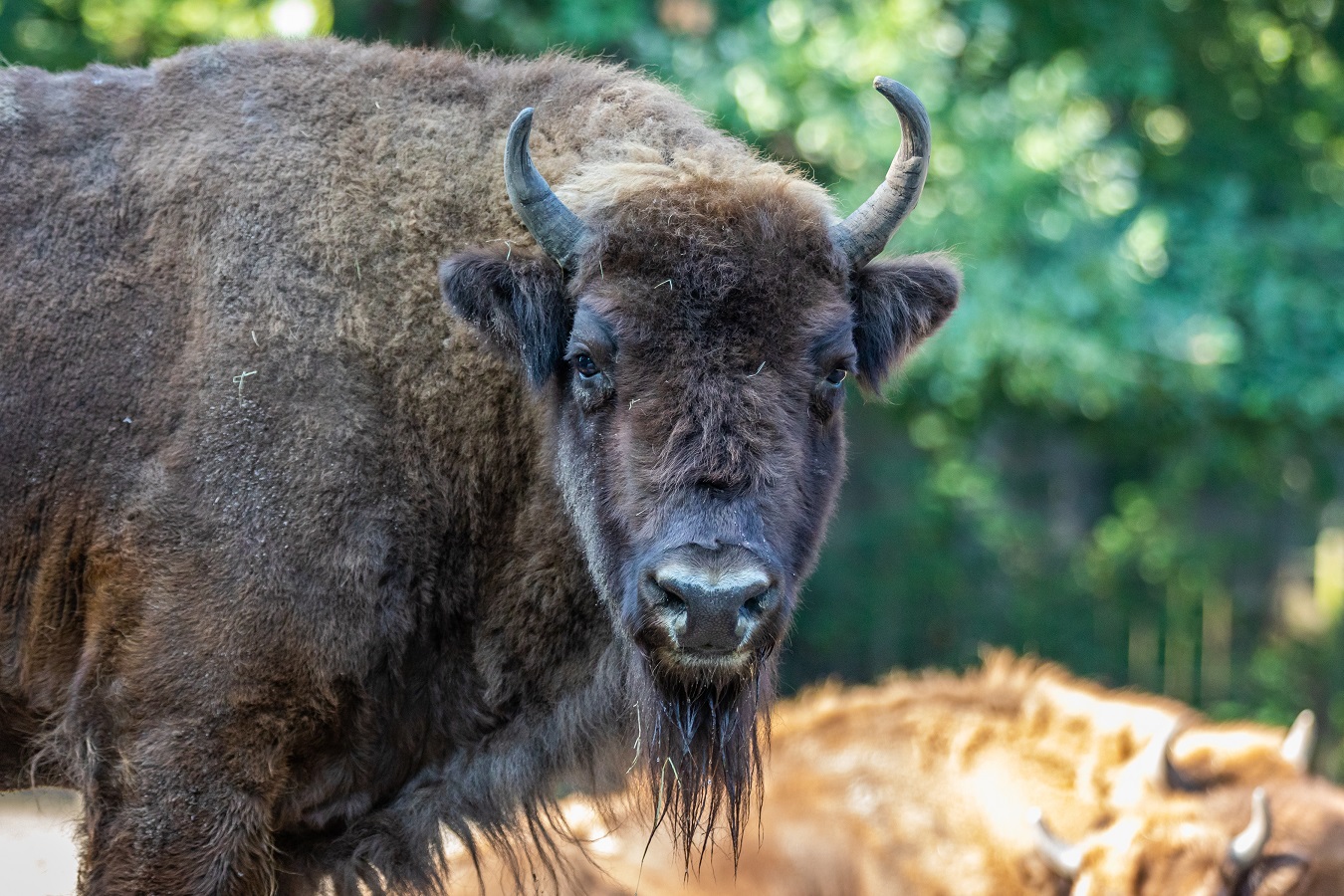Our planet is home to a vast array of animal and plant species. But unfortunately this diversity is under threat. Humans are currently responsible for the biggest mass extinction since the demise of the dinosaurs. One of the many species at risk is the European bison, which was once extinct in the wild. In partnership with the WWF, Zoo and Tierpark Berlin have now reaffirmed their commitment to protecting the species, drawing up a recovery plan to secure a future for the mighty beasts in their former natural habitat in the Greater Caucasus region. The organisations’ shared goal is to create a viable living space for European bison in the Shahdag National Park in Azerbaijan.
Almost a century ago, these shaggy beasts with their massive skulls and powerful shoulders were wiped out in the wild by human beings. They would have vanished from the planet altogether if it hadn’t been for a few individuals living in zoos and animal parks. In 1951, the difficult task began of reintroducing young bison from these “reserve populations” into parts of the species’ original range. Thanks to international breeding and reintroduction projects and to strict protection laws, there are now more than 7,000 of these animals living wild in Europe.
In 2019, Zoo and Tierpark Berlin teamed up with WWF Germany to start returning captive-born European bison to their natural habitat in the Caucasus. So far, the reintroduction project has released 20 bison into the core zone of the 1,300 km² Shadhag National Park in Azerbaijan. Nine further individuals are currently acclimatising at the on-site reintroduction centre, awaiting their turn. Aurel Heidelberg, Caucasus Programme Manager at WWF Germany, explains: “With the measures already implemented, we have created a solid foundation for a viable bison population to get established in the Shadhag National Park over the coming years. From here on, it’s largely a matter of accompanying the released animals as they settle into their new habitat and bringing more bison to the reintroduction area.”
Berlin’s zoos and WWF Germany have renewed their memorandum of understanding (MoU) and developed concrete measures for the next seven years with the goal of securing a future for the European bison in the Greater Caucasus region. “As a zoological facility, we are an essential part of the global species conservation network,” said Zoo and Tierpark Director Dr Andreas Knieriem at the signing of the MoU. “We believe it is our duty to make an effective contribution to protecting our natural environment. The reintroduction of otherwise extinct animals into the wild is an extremely complex task that requires long-term commitment. This is not a task that any one country, zoo or environmental organisation could take on alone. The bison reintroduction project has demonstrated very clearly that species conservation is a team effort.”
“The European bison is just one example of the tragic fate that has befallen so many wild animals, driven to the brink of extinction through hunting and habitat destruction by humans,” said Christoph Heinrich, Director of Conservation at WWF Germany. “Our partnership with Zoo and Tierpark Berlin is allowing us to return these magnificent animals to the land they roamed for hundreds of years. In a time marked by the destruction of biodiversity, this is an encouraging ray of hope.” The jointly signed MoU covers three main areas of action: organising and financing the transportation of additional bison from Berlin, fostering and maintaining dialogue between personnel in Germany and Azerbaijan, and optimising conditions for the bison in Berlin.
The document commits to reintroducing 70 bison to Azerbaijan’s Shadhag National Park by 2028. The signatories also plan to have keepers and veterinarians from Berlin share their knowledge of animal keeping and medicine more intensively with their colleagues in Azerbaijan. To facilitate this knowledge exchange, two staff members from Azerbaijan will visit Berlin this summer. “We have decades of practical experience in keeping, caring for and transporting European bison,” said Christian Kern, Zoological Director at Zoologische Gärten Berlin. “We want to share this valuable wealth of experience with our colleagues in Shadhag National Park. At the same time, we are keen to hear about their observations of the bison in the national park. We are looking forward to learning from one another in pursuit of our common goal.” As in the past, suitable individuals from zoos all over Europe are being brought together to form a herd at Tierpark Berlin. After a period of familiarisation in Berlin, the bison will set off on their journey to Azerbaijan. The transports are set to take place every year, in the autumn.
To enable the Tierpark to house up to ten additional bison each year, its infrastructure must be expanded. New stable boxes and a holding pen are to be erected, and small structural alterations will be made to the existing bison habitat to ensure that multiple animals can be loaded as quickly as possible on the day of the big journey.
Species protection – a small contribution can make a big difference!
Species conservation will play an even greater role at Zoo and Tierpark Berlin in the future. Visitors now have the option to make a direct contribution to the protection of endangered animals and their habitats by paying a small additional fee on top of their ticket price. These optional donations amount to 50 cents per day ticket and €2.50 per annual pass. All proceeds go to the Zoo and Tierpark’s Berlin World Wild conservation programme, with money being channelled directly into protecting threatened species. The programme supports more than 35 projects around the world.


